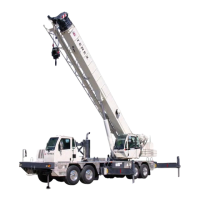The oil should be a good quality hydraulic oil rated at 150 SSU at 100°F, with the oil
temperature held at 120°F plus or minus 5°F.
The feed line must be of adequate size with no more than 5” mercury vacuum adjacent to
the pump inlet. As a rule, the feed line must provide a feed flow velocity not in excess of 8
feet per second.
Hot oil must not be fed into a cold pump. It may seize. Jogging may prevent seizure.
Operate the pump at least two minutes at zero pressure and at moderate speed (not over
1500 rpm).
If pump becomes hot to touch, it is binding and may seize. This doesn’t happen very often,
but if it does, pump will have to be disassembled and rebuilt, with extra care taken to
remove burrs and to assure freedom from binding.
Gradually increase pressure on pump, intermittently, until the desired test pressure has
been reached. This should take about five minutes.
Delivery should run close to rated catalog performance figures which are averaged from
testing several pumps. Something like a 5% lower reading may be used as a rated
minimum if new or relatively new parts have been used. When rebuilding the pump with
parts from the original pump, which, while worn, appear satisfactory for re-use, a 10% or
15% lower reading may be permitted, depending on the performance expected from the
equipment. One’s own experience will prove the best guide here.
Many repairmen measure the output at normal operating speed and at zero pressure, then
again at 1000 psi (or the operating pressure of the equipment) and allow a volume decrease
approximating the listing below. It is a suggested reference only which makes allowance for
re-used parts.
Be sure to run the pump in the direction for which it was designed and built. Driving pump
in the wrong direction will build up pressure behind shaft seal, damaging it and
necessitating replacement.
Since it is rarely feasible to test motors on dynamometers, the practical procedure is to test
them as pumps, running complete testing procedures in each direction.
After completing testing procedures, pump is ready for installation and immediate duty
operation on equipment. Again, it must be remembered that to prevent seizure, hot oil must
not be fed into a cold pump.
USE OF IMPROPER TOOLS IN SERVICING THESE PUMPS MAY RESULT IN
DAMAGE TO PUMP COMPONENTS.
477P/N 12261-683 REVISED: January 2015

